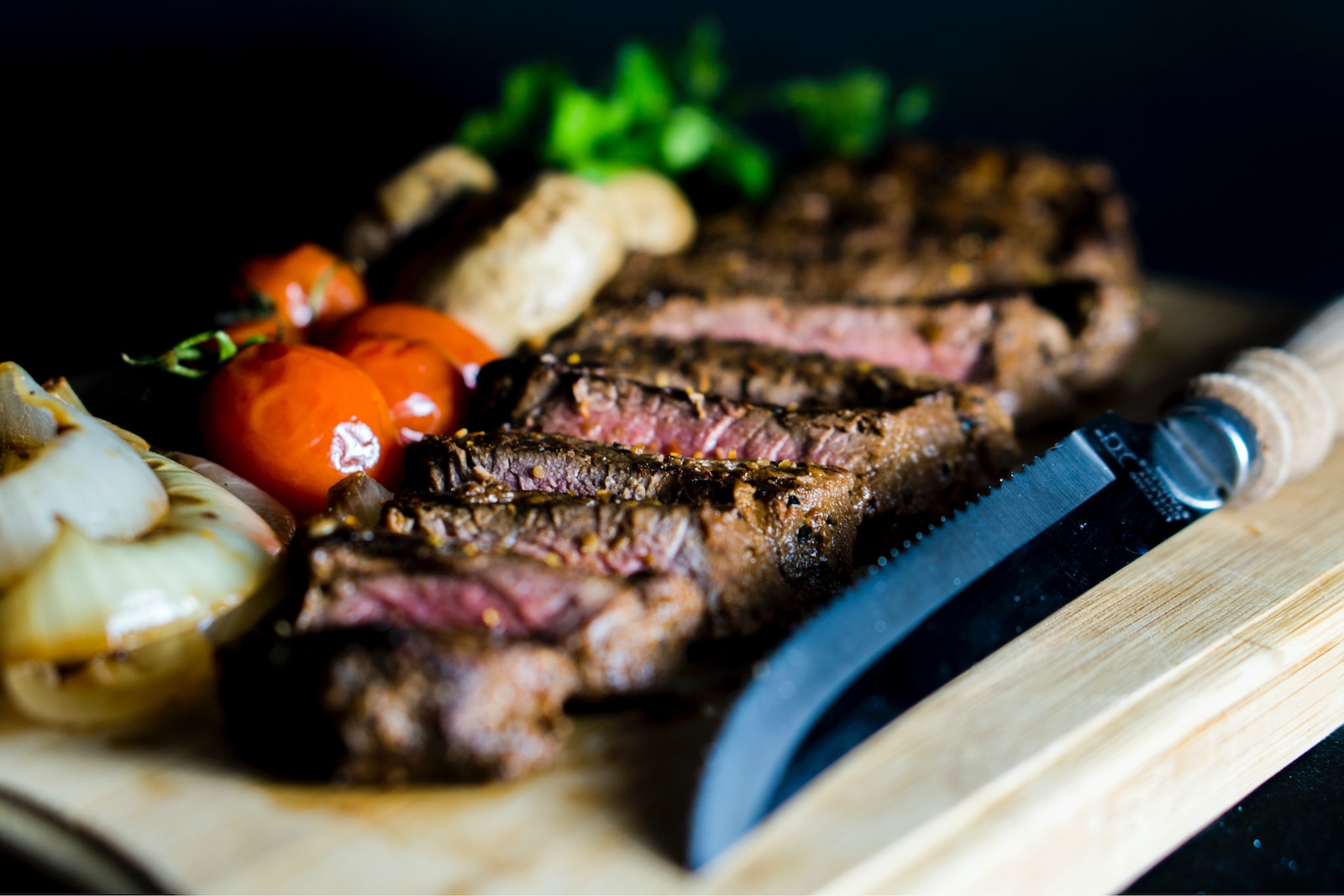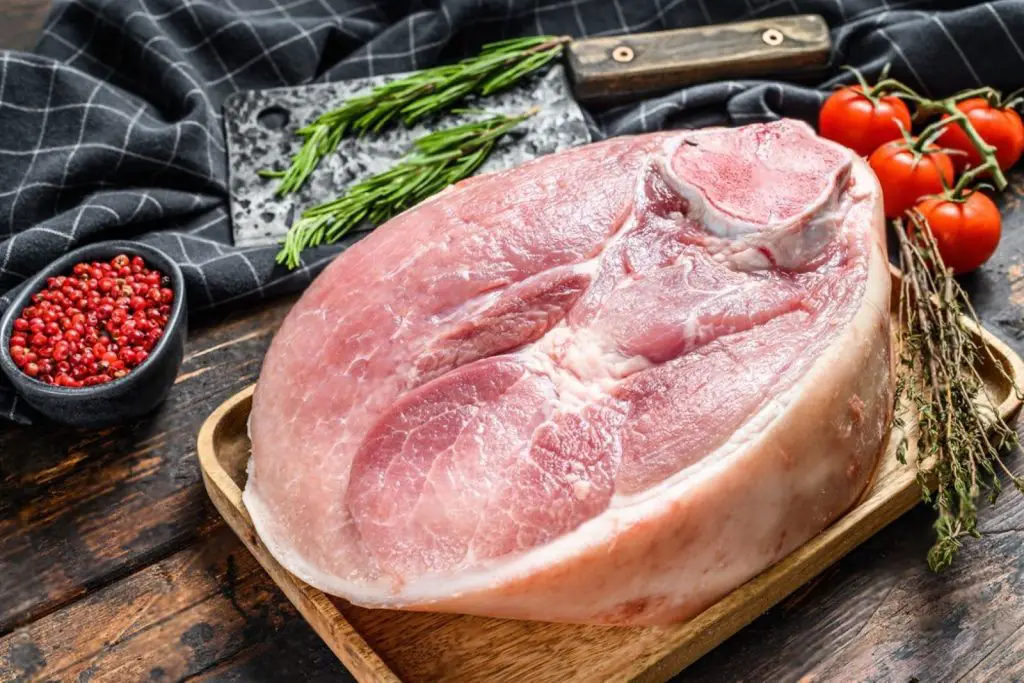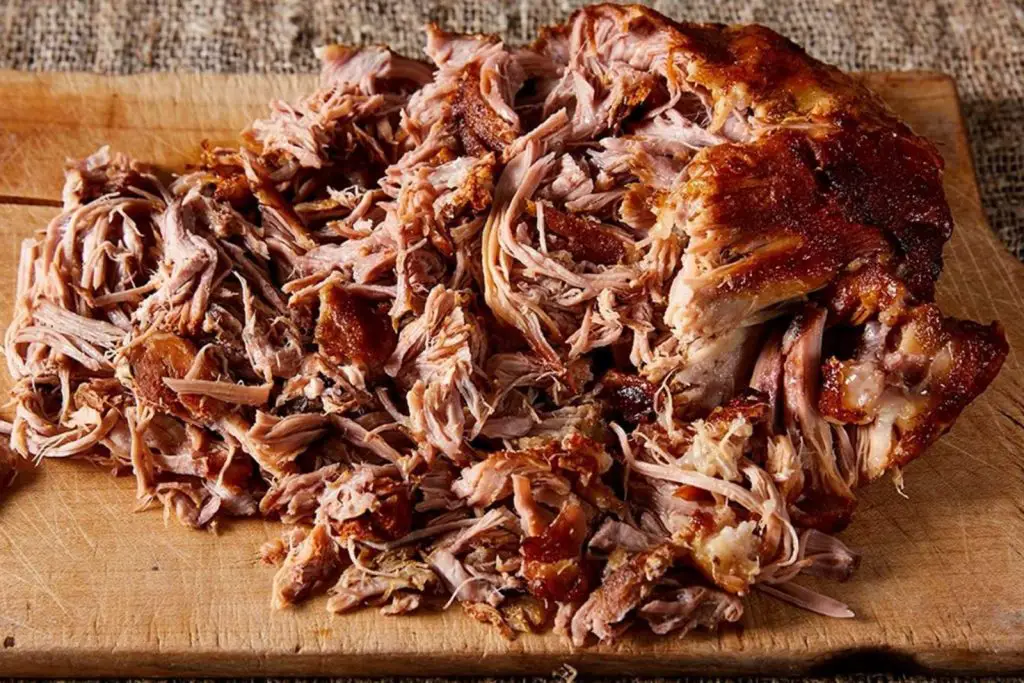
Skirt steak is a flavorful and versatile cut of beef that’s favored in many cuisines for its tenderness and rich taste. Whether you’re stocking up during a sale or preparing for a busy week ahead, freezing skirt steak can help you preserve its quality and enjoy it at a later date. This guide outlines the steps to properly freeze skirt steak, ensuring that it maintains its texture and flavor for your future culinary creations.
Follow these steps to freeze skirt steak effectively:
Step 1: Choose quality skirt steak
When embarking on the journey of freezing skirt steak, the importance of selecting a high-quality cut cannot be overstated. The success of your frozen steak endeavor hinges upon the initial choice you make at the butcher counter or grocery store. The selection process should be guided by an eye for detail and a discerning palate.
Opt for skirt steak cuts that exhibit a generous marbling of fat throughout the meat. The intricate web of fat interspersed with lean muscle fibers contributes not only to the steak’s rich flavor but also plays a pivotal role in maintaining its tenderness during the freezing and thawing process. Marbling effectively bastes the meat from within as it melts during cooking, rendering a moist and succulent final dish.
Examine the color of the meat closely. A vibrant, deep red hue indicates freshness and quality. Any discoloration, such as gray spots or uneven coloring, could signify compromised meat that might not fare well through the freezing process. Skirt steak that is free from blemishes and has a consistent color distribution is more likely to retain its appetizing appearance after being thawed and cooked.
Equally crucial is your sense of smell. A fresh skirt steak should possess a clean and neutral odor. If there’s a strong, unpleasant smell akin to ammonia or rot, it’s a clear indication that the meat might be past its prime and could develop off flavors during freezing. Trust your nose; it’s an excellent detector of meat quality.
Can I freeze skirt steak bought from a store already frozen?
Freezing store-bought frozen skirt steak is possible but quality may diminish. Prioritize freezing fresh skirt steak for better results. Freezing twice can affect texture and taste due to moisture loss during thawing and refreezing.
Step 2: Prep the skirt steak
As you delve into the process of freezing skirt steak, proper preparation becomes a crucial step in ensuring that your culinary endeavors yield the best possible outcomes. Before placing the steak into the frosty confines of the freezer, a bit of attention to detail can go a long way in preserving both its quality and the eventual palatability of your dishes.
Begin by taking a close look at the skirt steak. While a generous marbling of fat is desirable for its flavor-enhancing properties, it’s important to address any excessive or unevenly distributed fat. Trimming off excess fat not only contributes to the steak’s overall healthfulness but also plays a role in preventing the formation of ice crystals during freezing. These crystals can lead to freezer burn, a condition that adversely affects the meat’s texture and taste.
Additionally, pay attention to connective tissues, sinew, and membranes present in the skirt steak. These components can be tough and chewy when left unattended. By carefully removing them prior to freezing, you create a more enjoyable dining experience down the line. Properly trimmed steak also ensures even cooking, as fat and tough tissues can cause irregular heating, leading to uneven doneness.
Step 3: Portion as needed
In the realm of freezing skirt steak, one strategic approach that can enhance your culinary convenience and quality is the art of portioning. As you prepare to place the meat in the freezer, consider the benefits of dividing it into smaller cuts, a practice that offers not only practicality but also a more refined dining experience down the road.
Portioning skirt steak before freezing involves cutting the meat into individual serving sizes or smaller portions that align with your anticipated usage. This approach becomes particularly advantageous if you don’t intend to use the entire steak in a single cooking session. By doing so, you empower yourself with the ability to thaw only the amount you need, minimizing waste and preserving the steak’s quality for subsequent culinary creations.
Imagine having the flexibility to reach into your freezer and extract exactly the right amount of skirt steak for your meal, without the need to defrost the entire batch. This level of precision not only reduces unnecessary food wastage but also ensures that each serving is as fresh and flavorful as the first. Smaller portions thaw more quickly and evenly, allowing you to enjoy your dish without compromising on taste or texture.
Additionally, portioning as needed opens up a world of culinary possibilities. You can experiment with different recipes and cooking methods, adapting your skirt steak to diverse flavor profiles and occasions. Whether you’re planning an intimate dinner or a festive gathering, having individually portioned cuts of skirt steak on hand provides the freedom to tailor your menu to your exact requirements.
This practice also aligns with the broader goal of minimizing food waste, an important consideration in today’s conscious culinary landscape. By portioning the skirt steak before freezing, you’re taking a proactive step towards reducing your environmental footprint while simultaneously maximizing the value you derive from your ingredients.
Step 4: Wrap and protect
As you embark on the journey of freezing skirt steak, one of the critical considerations is safeguarding the meat from potential threats such as freezer burn and unwanted exposure to air. Preserving the steak’s texture, flavor, and overall quality hinges on the protective measures you take at this stage.
To shield the skirt steak effectively from the harsh conditions of the freezer, it’s advisable to wrap it tightly using suitable materials. Two commonly employed options are plastic wrap and aluminum foil. These materials act as a barrier, preventing the intrusion of air and moisture that could compromise the steak’s integrity over time.
Plastic wrap offers the advantage of conforming closely to the contours of the meat, creating a secure seal that inhibits air from seeping in. It’s important to ensure a snug fit, as any gaps or loose ends could allow the cold air to penetrate and lead to the formation of ice crystals, resulting in freezer burn. Properly wrapping the steak in plastic wrap is a methodical process that requires attention to detail, ensuring that no part of the meat is left exposed.
On the other hand, aluminum foil provides a sturdier option that offers additional protection against light, which can also degrade the quality of frozen food over time. By enveloping the skirt steak in a double layer of aluminum foil, you create a more robust barrier against potential contaminants.
For those seeking an even higher level of protection, vacuum-sealed bags present an ideal solution. These specialized bags remove air from the package before sealing, effectively creating a vacuum and minimizing the presence of oxygen that can lead to freezer burn and off flavors. The airtight seal created by vacuum-sealed bags ensures that the skirt steak is cocooned in a controlled environment, maintaining its freshness and quality for an extended period.
Step 5: Place in an airtight container
As you navigate the realm of freezing skirt steak, the choice of containment takes center stage. While wrapping the meat with materials like plastic wrap or aluminum foil offers effective protection, an equally viable option involves placing the skirt steak in an airtight container. This method provides an added layer of preservation, safeguarding the meat’s quality and integrity against the potential threats of freezer burn and flavor degradation.
An airtight container functions as a secure fortress for your skirt steak. Unlike wrapping materials, which can sometimes leave small gaps or crevices, an airtight container offers a seamless enclosure that minimizes the exchange of air between the interior and exterior environments. This is crucial because exposure to air is a primary contributor to the development of freezer burn, which can manifest as discolored patches, loss of moisture, and textural changes in frozen food.
Freezer burn occurs when moisture within the food evaporates, forms ice crystals, and subsequently sublimates into the freezer’s dry air. This process not only leads to unappetizing changes in texture but can also negatively impact the taste and overall quality of the meat. Placing skirt steak in an airtight container acts as a barrier against these detrimental effects by significantly reducing the contact between the meat and the freezer’s dry air.
Furthermore, the airtight container maintains the steak’s natural flavors by preventing any mingling with unwanted odors or flavors present in the freezer environment. This ensures that when you decide to defrost and prepare the skirt steak, its original essence remains intact, contributing to a more enjoyable dining experience.
When selecting an airtight container, opt for one that is specifically designed for freezer use. These containers are crafted to withstand the extreme temperatures of the freezer environment without becoming brittle or losing their sealing capabilities. Transparent containers also offer the advantage of allowing you to see the contents without the need to open the container, minimizing unnecessary exposure.
Can I freeze skirt steak in its original packaging?
Freezing skirt steak in its original packaging is possible but not ideal. The packaging may not provide sufficient protection against freezer burn. Repackaging with airtight materials reduces risks and maintains quality.
Step 6: Label and date
As you delve into the process of freezing skirt steak, an often overlooked but essential step involves the act of labeling and dating your frozen parcels. While it may seem like a simple administrative task, this step carries significant implications for preserving the steak’s quality, ensuring efficient use, and maintaining a well-organized culinary inventory.
Labeling each package of frozen skirt steak with the date of freezing serves as a snapshot in time, a record of when the meat began its frozen journey. This seemingly mundane piece of information becomes a key factor in managing the freshness and quality of your ingredients. Over time, the natural process of freezing can gradually degrade the quality of the meat, and while it won’t spoil in the traditional sense, it may experience changes in texture and flavor.
By clearly dating each package, you’re empowered with the knowledge of when the skirt steak entered the freezer. This allows you to make informed decisions about how long you can safely store the meat before its quality starts to decline. Different cuts of meat have varying recommended freezer storage durations, and keeping track of these timelines ensures that you can confidently plan your meals while minimizing the risk of serving subpar dishes due to prolonged freezing.
Moreover, proper labeling facilitates a first-in, first-out (FIFO) approach to ingredient use. As you accumulate frozen cuts of skirt steak over time, knowing which packages were frozen earlier helps you prioritize consumption. Using the oldest packages first ensures that you enjoy the meat at its peak quality, maintaining its desired taste and texture. This practice also aligns with the principles of responsible food management and reduces the likelihood of food waste.
When labeling, it’s important to use a waterproof and smudge-resistant marker or labeling method. This prevents the label from becoming illegible due to condensation or other freezer-related factors, ensuring that you can always access the information you need.
Step 7: Freeze promptly
As you embark on the freezing journey with your skirt steak, one of the pivotal factors in ensuring its quality and safety lies in the timely and strategic act of freezing. Placing the meat in the freezer promptly, with careful attention to the freezing environment, lays the foundation for preserving the steak’s texture, taste, and overall integrity.
Once you’ve meticulously prepared the skirt steak for freezing, it’s crucial to act promptly to ensure that the meat doesn’t linger at unsafe temperatures. Rapid freezing not only helps retain the steak’s natural flavors and textures but also minimizes the growth of harmful bacteria that could compromise its safety.
Select the coldest part of your freezer to house the wrapped or containerized skirt steak. This region typically lies toward the back and at the bottom of the freezer, as these areas experience the least temperature fluctuation when the freezer door is opened and closed. Placing the meat here ensures a consistent freezing environment, which is essential for maintaining the steak’s quality.
If you’re fortunate enough to possess a deep freeze or a separate freezer unit, consider using it for storing the skirt steak. These specialized freezers are designed for long-term storage and maintain lower temperatures than regular fridge freezers. By utilizing such a freezer, you’re providing an even more optimal environment for preserving the meat’s quality during the freezing process.
Temperature is a critical factor in freezing. Set your freezer’s temperature to 0°F (-18°C) or lower. This low temperature prevents the growth of most bacteria and pathogens that could cause foodborne illnesses. The cold environment essentially slows down biological processes, preserving the steak in a state of suspended animation until you’re ready to defrost and prepare it.
What’s the maximum freezer storage time for skirt steak?
The recommended maximum freezer storage time for skirt steak is around 3-12 months. Beyond this, quality may decline due to freezer burn and texture changes. Shorter freezing periods maintain better taste and texture.
Step 8: Thaw properly
In the realm of freezing and utilizing skirt steak, the transition from frozen to ready-to-cook involves a critical step: thawing. Proper thawing is the bridge that ensures the frozen meat’s journey culminates in a flavorful and well-prepared culinary experience. As you embark on this stage, understanding the nuances of thawing and implementing the best practices can make all the difference in preserving the steak’s texture, taste, and overall quality.
When the moment arrives to retrieve your frozen skirt steak for your culinary creation, it’s imperative to plan ahead for the thawing process. The key principle to keep in mind is gradual defrosting. Rapid temperature changes can potentially damage the meat’s cellular structure, leading to uneven textures and loss of moisture.
The most recommended method for thawing skirt steak is by placing it in the refrigerator. This method involves transferring the frozen meat from the freezer to the fridge and allowing it to defrost slowly over time. The controlled environment of the refrigerator ensures that the meat remains within safe temperature ranges, minimizing the risk of bacterial growth while preserving its natural qualities.
Thawing in the refrigerator requires foresight, as it may take several hours or even overnight for the steak to completely thaw, depending on its size and thickness. Planning your meals in advance and factoring in the thawing time is essential to ensure that the meat is ready when you need it.
It’s important to keep the frozen steak in its original packaging or airtight container during the thawing process. This prevents any potential cross-contamination with other foods in the fridge and maintains the steak’s integrity.
Avoid the temptation to hasten the thawing process using methods like room temperature or warm water, as these can lead to uneven thawing and increase the risk of bacterial growth. Microwaving is also discouraged, as it can lead to uneven defrosting and partial cooking of the meat, altering its texture and taste.
Can I cook skirt steak directly from frozen?
It’s best to thaw skirt steak before cooking for even results. Thaw in the refrigerator or sous vide for safe and tasty cooking. Cooking frozen may lead to uneven doneness and texture changes.
Other related questions
Can I refreeze skirt steak?
Yes, you can refreeze skirt steak, but it’s important to do so with caution. Refreezing can affect texture and flavor due to moisture loss and potential bacterial growth. If the steak was thawed in the refrigerator and maintained at a safe temperature, refreezing is safer; otherwise, it’s advisable to cook the steak first before freezing again.
How do I know if the skirt steak has gone bad after being frozen?
Check for signs like off odors, freezer burn (dry, discolored patches), or a change in texture (excessive ice crystals). If the steak appears significantly different from when frozen, has an off smell, or shows signs of spoilage, it may have gone bad. When in doubt, prioritize safety and discard if unsure.
Can I freeze marinated skirt steak?
Yes, marinated skirt steak can be frozen. The marinade may enhance flavor, but it can affect texture upon thawing. Freeze in marinade for better results; otherwise, pat dry before freezing to reduce texture changes.
Can I season skirt steak before freezing?
Yes, seasoning skirt steak before freezing is feasible. However, consider the impact on flavor and texture upon thawing. Strong seasonings may intensify during freezing, affecting taste.
Can I freeze cooked skirt steak?
Yes, freezing cooked skirt steak is possible. Ensure it’s cooled down before freezing and use airtight packaging to prevent freezer burn. Label with date for proper rotation.








